Some things I've made
I haven't posted anything for a long time now, so here's some things I've made over the past five years or so in no particular order.
rng-pcb: A CircuitPython Random Number Generator
This was built as part of the Boldport Club's community PCB swap, which was a really fun project to be part of. I based this board on the Adafruit Trinket M0, using a 12 V charge pump to power an avalanche noise generator. It uses a stack of circuit boards as an enclosure, and has two capacitive touch buttons in the front top corners. The firmware is pretty basic, but I think it's quite cool to 4096 bits of (probably) true randomness appear on the screen. It was also the first project that I documented on GitHub, and most people managed to put it together despite me using tiny SOT-523 (1.6 × 1.6 mm including leads) transistors instead of the planned SOT-23 (~ 2.9 × 2.4 mm) ones.
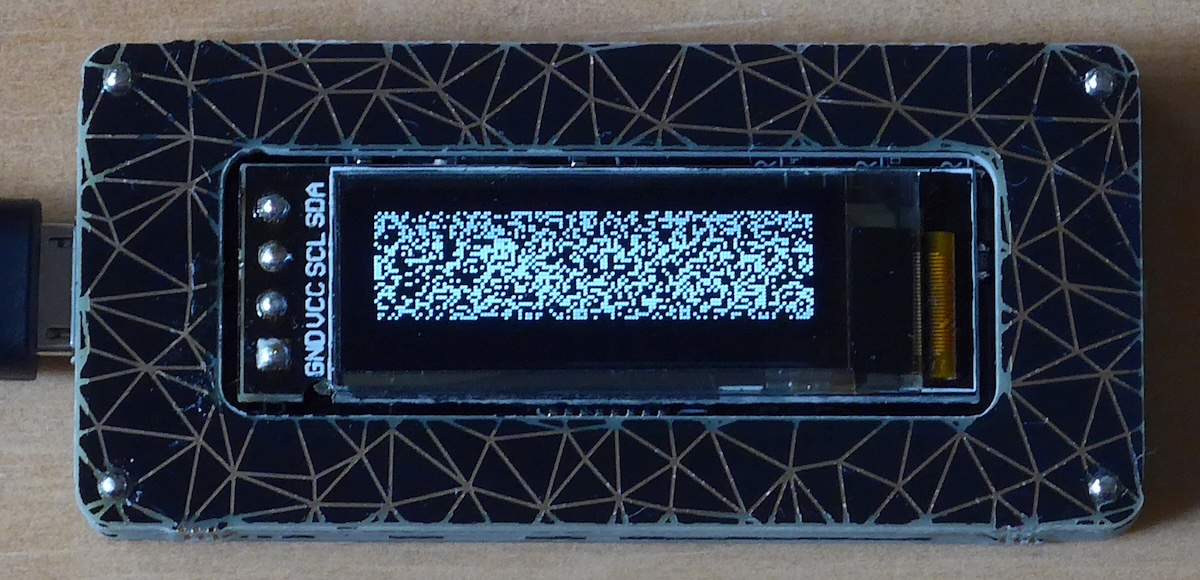
kbx's Nixie Clock
Another project from the PCB swap, this is probably the largest electronics/soldering project I've built. kbx published display boards for most of the commonly-available types of nixie tubes and I went with IN-14 (ИН-14) tubes since they were a good balance of size and cost. Despite a few issues with hand soldering so many surface-mount components, it's been powered up and keeping time for seven years now.
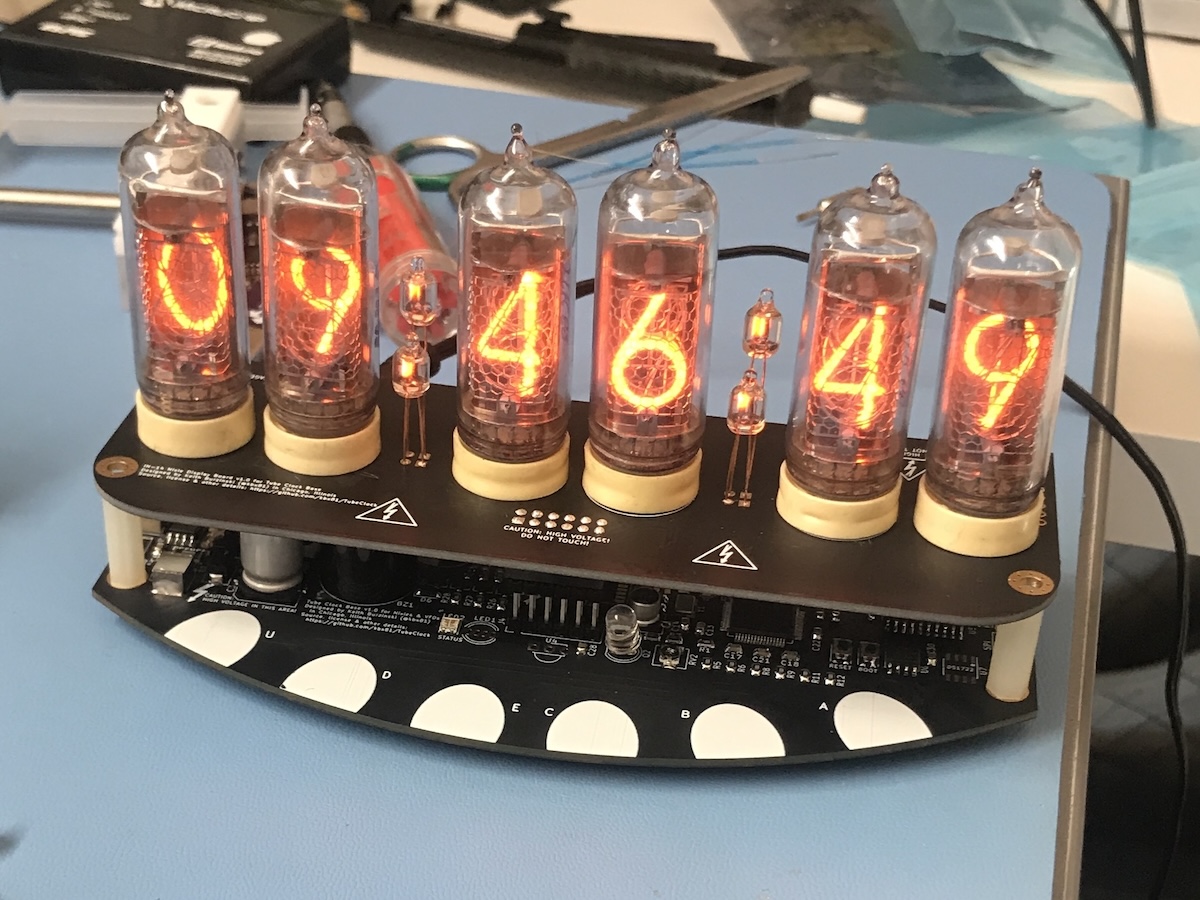
A breakout for the SAMD21E chip
I had some of these chips left over from the rng-pcb project and made this to practice reading datasheets and PCB design. My original intent was for this to run a low-impedance crystal without load capacitors as the datasheet describes, but I couldn't seem to get this to work; my suspicion is that it's to do with the automatic gain control function not being available which I later read about in the errata.
The first boards were made by OSH Park - as always, they were great, but I then received a US$50 voucher from Seeed Studio to try their Fusion PCB service. They produced the revised board - the only change was to add footprints for load capacitors - and everything seemed to work fine.
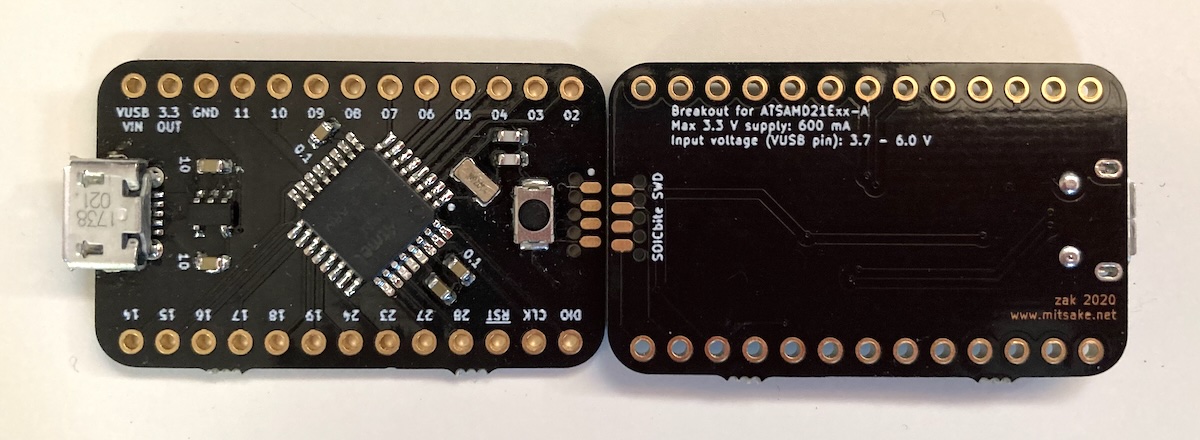
SiCK-60 - a 3D-printed keyboard
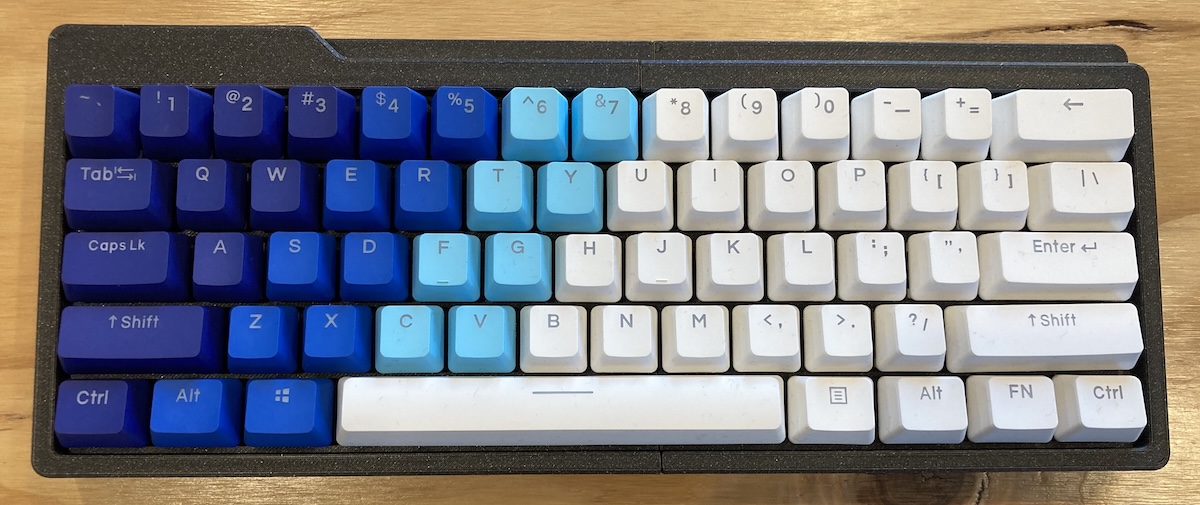
I got hold of some Cherry MX compatible blue (clicky) switches as part of the Boldport 'travelling box' community project. As I did't have a lot of desk space, Fedor Sosnin's SiCK-60 keyboard seemed like a good fit. I hand wired it using the procedure outlined by cribbet on the GeekHack forums which worked well, though I'd definitely use solder-through enamelled wire if I were doing another build. Stripping the wire was by far the most tedious bit of the build.
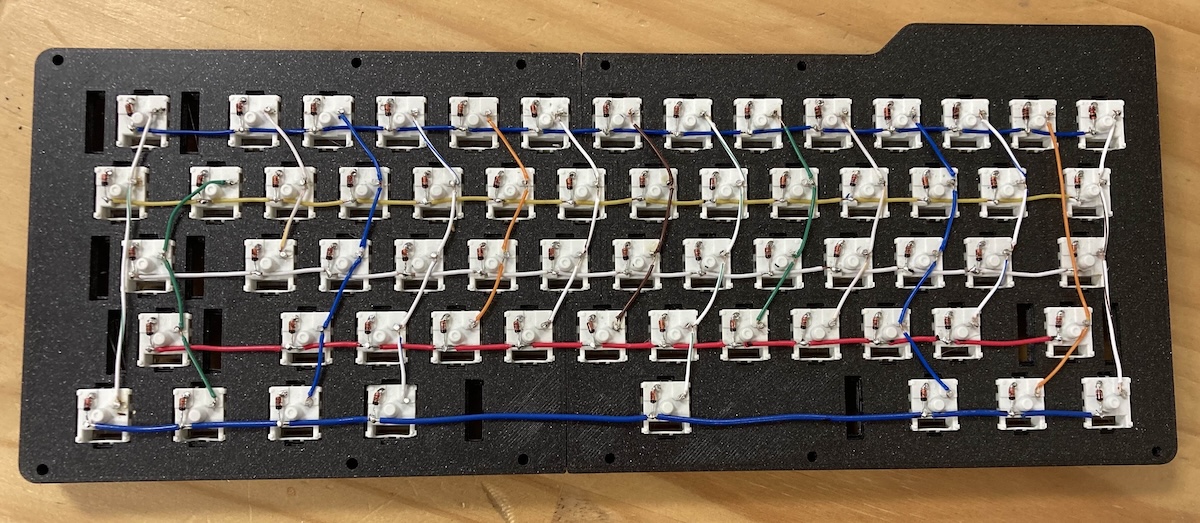
The controller is a Pimoroni PGA 2040 wired to a micro-USB breakout. To allow firmware updates I drilled a hole and mounted a tactile switch in the bottom soldered between the PGA2040's BOOT pin and GND. Since I was using KMK firmware, setup was pretty easy, though writing a valid keymap took a few rounds of trial and error.
Matariki - a soldering kit
This circuit board was designed for my then-job as a first electronics project for people who wanted to learn to solder. Advice from Māori colleagues helped to get the star positions and names correct and the project ended up being really popular with people of all ages. I was particularly happy when someone who'd built a kit with their child came back the next week to repair an electric guitar that had a loose connection on the jack. I'm currently planning a revision to change the coin cell over to 2 × AAA batteries. The version below was put together by my colleague (as one of their first soldering projects!) and you can watch their video of the process if you like.
